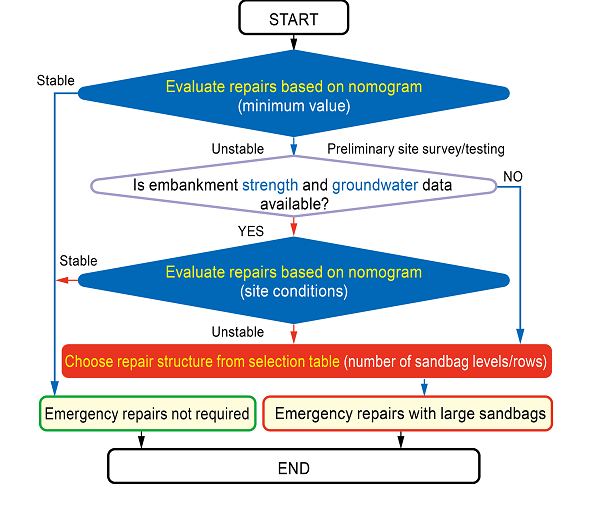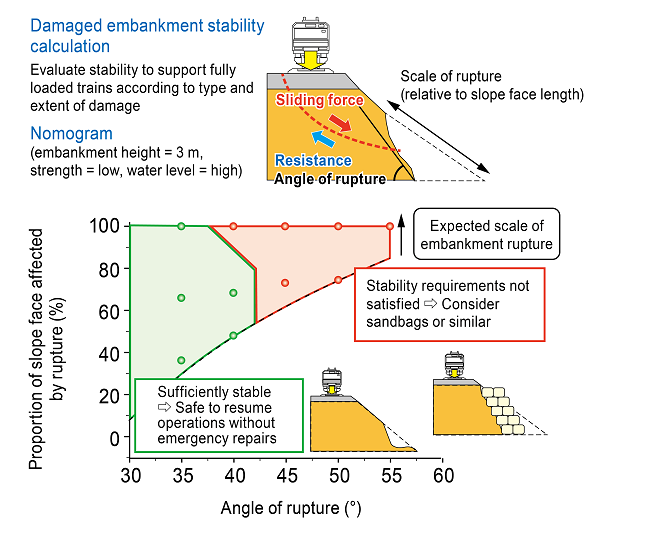4. Rainfall-damaged embankment safety assessment tool
In recent years, heavy rainfall events have been causing severe damage to railway embankments.
The initial emergency response to resuming operations following embankment damage along rail lines typically involves the use of large sandbags and train operation at reduced speeds.
In the absence of proper structural standards or criteria, this means that major repairs are often needlessly deployed on relatively minor instances of embankment damage.
We conducted a number of rainfall and load tests to evaluate the impact of resuming train operations on damaged embankments and embankments fortified with large sandbags. We used the findings to create a flowchart (see Figure 1) tool for deciding whether it is safe to resume operations when an embankment has been damaged by rainfall, and determining the most appropriate repair structure. The tool uses a nomogram (see Figure 2) to assess the damage to the embankment (the scale and angle of rupture) and determine whether train operations can be safely resumed without the need for emergency repairs. Where repairs are deemed necessary, the tool includes a handy selection table (see Figure 3) for choosing the required repair structure. Both the nomogram and the selection table are based on stability calculations predicated on the minimum required safety standard for damaged and repaired embankments, indicated by the blue arrows in Figure 1. Where circumstances allow for preliminary testing and/or site surveys of embankment strength and groundwater conditions, this information is incorporated into the nomogram and selection table. In some cases it may be determined that there is no need for emergency repair work on an embankment that has been declared unstable, or that a simpler approach can be used (see red arrows in Figure 1).
Other Contents
- 1. Rapid seismic damage estimation tool for large bridges
- 2. Seismic diagnostic for existing pile foundations affected by nearby excavation work
- 3. Earthquake countermeasure for poles on viaduct using stays and overhead wires
- 4. Rainfall-damaged embankment safety assessment tool
- 5. Creation of time-varying dynamic wind maps
- 6. Braking performance improvement under snow conditions by controlling wheel temperature using snowproof brake systems
- 7. Platform safety support device using side-mounted cameras
- 8. Silicon buffers on passenger cars provide longitudinal ride comfort and improved safety in train breakdown operations
- 1. Rapid seismic damage estimation tool for large bridges
- 2. Seismic diagnostic for existing pile foundations affected by nearby excavation work
- 3. Earthquake countermeasure for poles on viaduct using stays and overhead wires
- 4. Rainfall-damaged embankment safety assessment tool
- 5. Creation of time-varying dynamic wind maps
- 6. Braking performance improvement under snow conditions by controlling wheel temperature using snowproof brake systems
- 7. Platform safety support device using side-mounted cameras
- 8. Silicon buffers on passenger cars provide longitudinal ride comfort and improved safety in train breakdown operations



